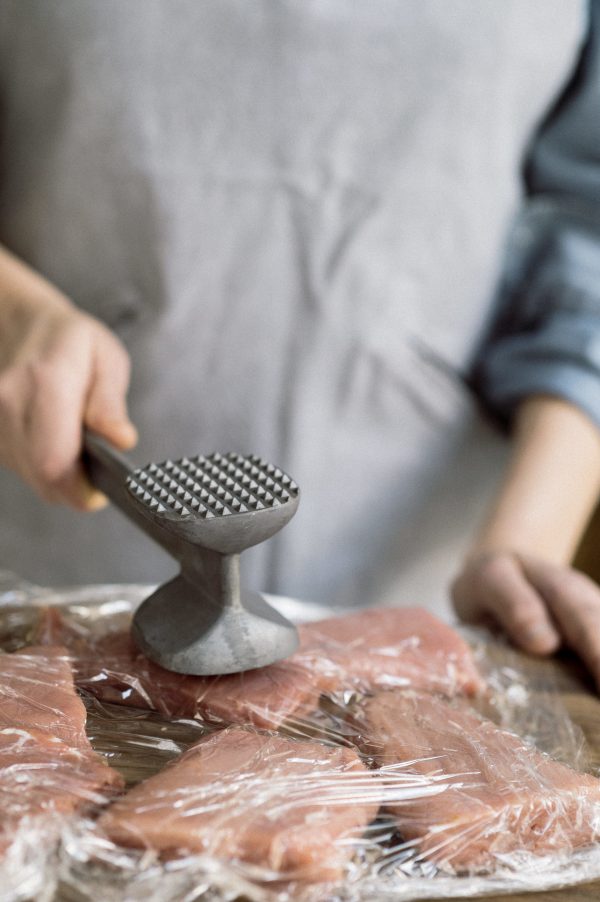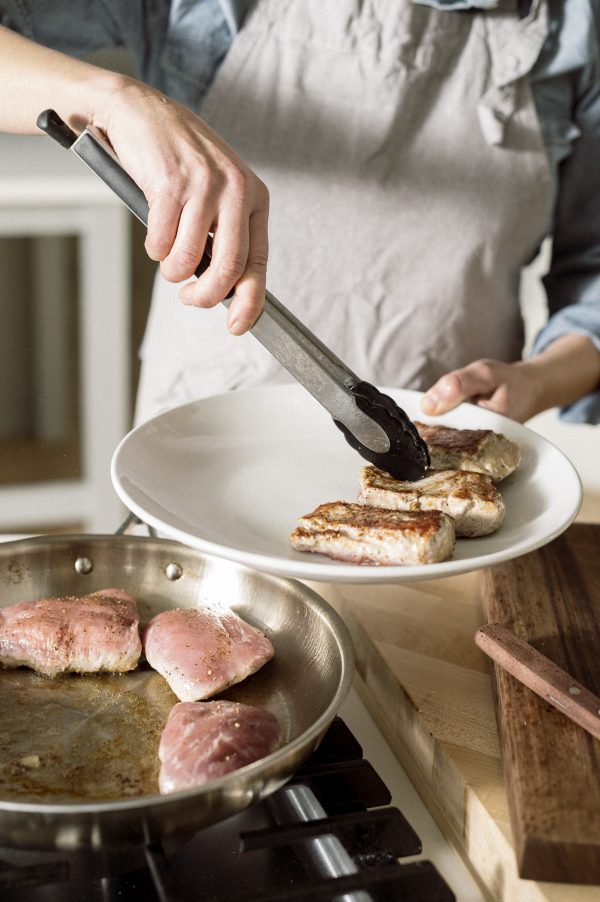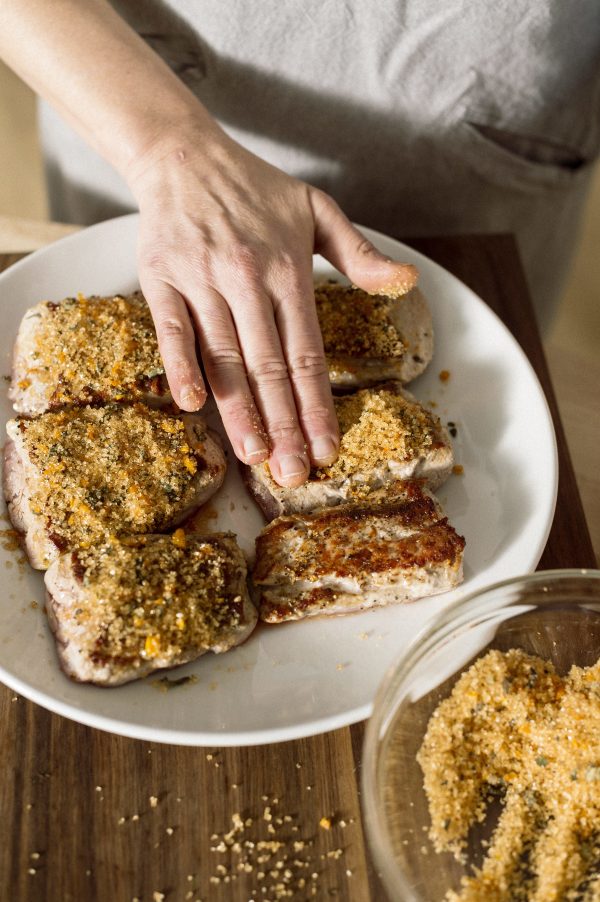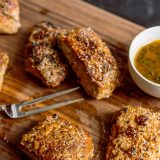Juicy, dry, succulent, tough, tender—there’s a word missing from our vocabulary to describe pork tenderloin, good or bad. Crunchy.
We learned this lesson from Francis Mallmann, the European- trained Argentine chef perhaps best known for deliberately blowing past the limits of browning. He burns food, to a delicious crisp.
“The right amount of burning or charring can be delicious and seductive,” Mallmann writes in “Seven Fires,” a guide to the tools and techniques of cooking with open fire. But “take the burning too far, and it destroys the dish. Stay just this side of the line, and it is lovely.”
To walk that admittedly fine line, Mallmann uses open fire and cast iron, the effect of which creates a crust: “Of all the delights of the palate, nothing signals pleasure more than the crunch of a crust and the taste of caramelized and crisp bits,” Mallmann says. “Crust concentrates the taste of everything you cook.”
That’s why we were so taken with his recipe for pork tenderloin, which tends to be a mundane cut. He coats one side of the pork with brown sugar and a fruity orange confit, then sears the meat, sugar side down, on a sizzling-hot chapa (a griddle set over a wood fire). He only turns the pork when the sugary topping is well browned. After another 10 or 15 minutes, the pork is beautifully charred, with a rosy-pink center.
Though it draws on the failsafe combination of savory and sweet, the dish is far from another serving of pork and apples. The key is the contrast: a shatteringly crisp sugar crust and chewy, tender pork in one bite.
We loved that elusive crunch, but at Milk Street we hit some roadblocks. We used a cast-iron skillet to replace the chapa, but no matter how hot it was when we seared the pork, the sugar topping fell off into the pan, bubbling up and scorching. So we switched to the broiler to allow us to brown the pork sugar side up. The results were easier on the pan, but the sugar still didn’t crisp up.
Our problem, it turned out, was not that the sugar was melting—which only happens above 365°F—but that it was dissolving in the pork’s moisture.
The solution was turbinado sugar, which has large crystals that hold their shape when exposed to moisture and heat. Patted on the pork and put under the broiler, it dissolved slightly but didn’t liquefy, getting us the crackly crust we had been after.
We refined our recipe a bit more, substituting coarsely chopped orange zest and fresh sage for the confit. We also cut the tenderloin into pieces before cooking, making the sugarcoated pork easier to handle.
When we pulled the meat from bits in the skillet. So we deglazed the pan with juice from the orange we zested earlier. More chopped sage and a healthy splash of cider vinegar made a tangy sauce that was the perfect finish for transformed tenderloin.
Get perfect pork every time

1. Use a meat mallet or a skillet to gently flatted the pork. Covering the meat with plastic wrap helps keep the kitchen clean.

2. Sear the pork on one side in a broiler-safe skillet. Don’t move the pork while it sears; it will affect the browning.

3. Press the sugar mixture onto the seared side. It’s efficient to line up the pieces before sugarcoating them.




